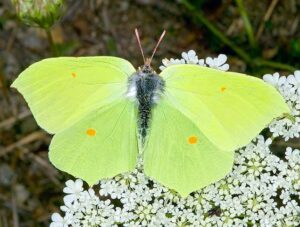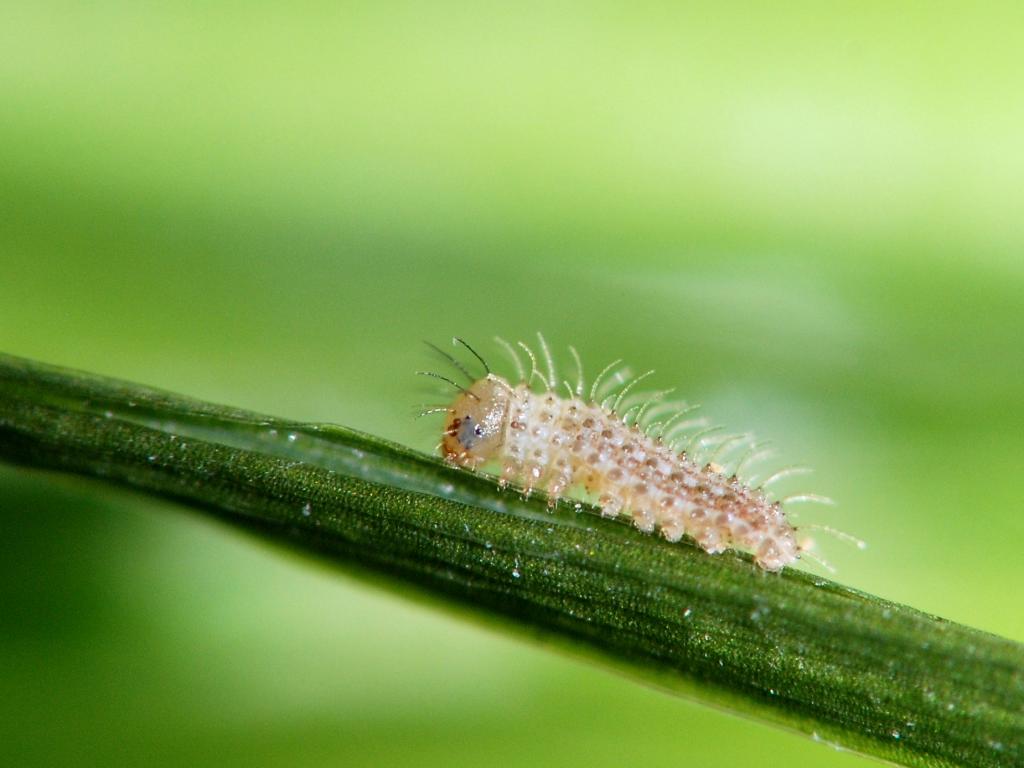
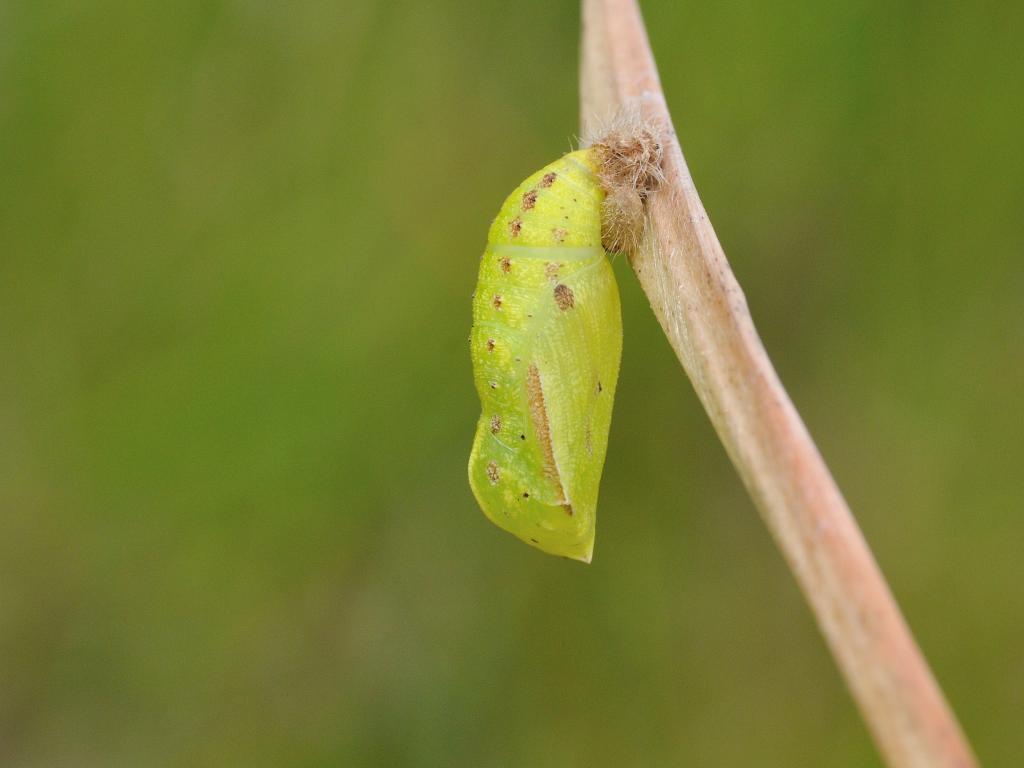
Widespread and common throughout Britain and Ireland. The Gatekeeper is generally smaller and more orange with a row of tiny white dots on the hind underwings.
The Meadow Brown is the most abundant butterfly species in many habitats. Hundreds may be seen together at some sites, flying low over the vegetation. Adults fly even in dull weather when most other butterflies are inactive.
Regional variations in the spotting pattern on the wings have led to it being studied extensively by geneticists over many years. Larger forms occur in Ireland and the north of Scotland.
It is one of our most widespread species, but many colonies have been lost due to agricultural intensification.
Habitat
Grasslands, including; downland, heathland, coastal dunes, undercliffs, hay meadows, roadside verges, hedgerows, waste ground and woodland rides and clearings. Also occurs in gardens, parks and cemeteries.
Warm open areas with tallish (0.5m) grass. Roadside verges, hedgerows, fields under suitable cultivation, woodland clearings, downland, heathland and coastal dunes.
Because of the vast distribution habitats are hard to define but broadly are forest edge, forest-steppe and meadow steppe habitats up to 2,000 m above sea level, cultivated lands (meadow, forest plantations, parks and orchards).
Size and Family
- Family: Browns
- Size: Medium
- Wing Span Range (male to female): 50-55mm
Conservation Status
- Butterfly Conservation priority: Low
- European status: Not threatened
Caterpillar Foodplants
A wide range of grasses are used. Those with finer leaves such as fescues (Festuca spp.), bents (Agrostis spp.) and meadow- grasses (Poa spp.) are preferred, but some coarser species such as Cock’s- foot (Dactylis glomerata), Downy Oat-grass (Helictotrichon pubescens), and False Brome (Brachypodium sylvaticum) are also eaten by larger larvae. Other species of grass are also believed to be used.
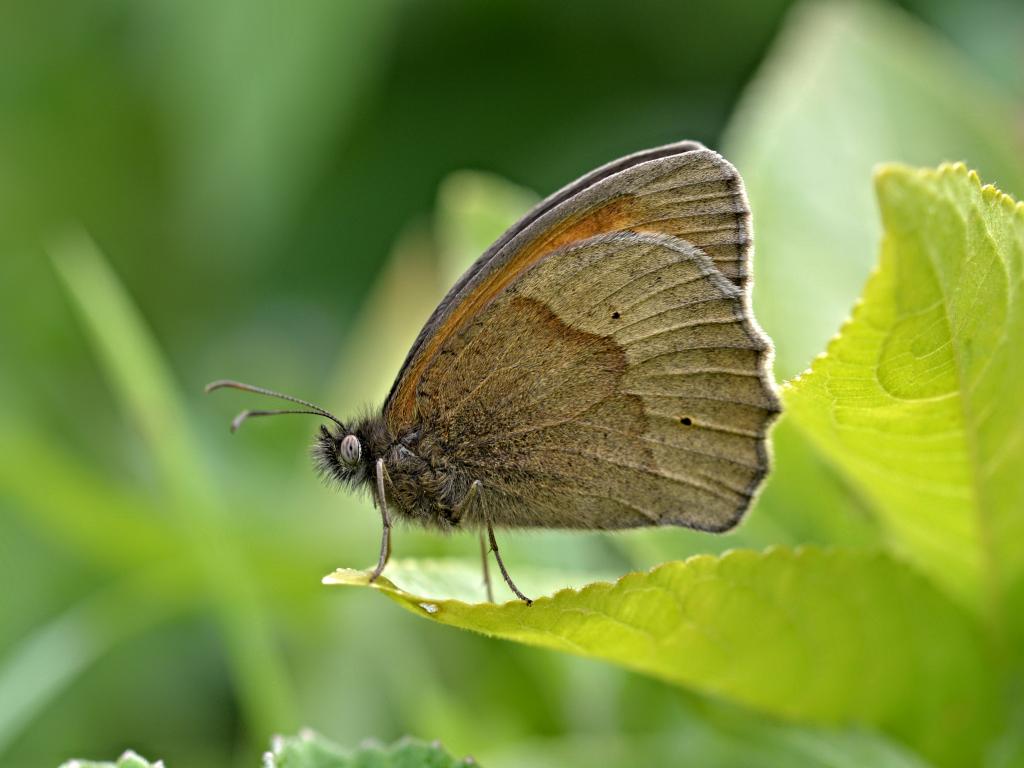
Diet
Recorded larval food plants include rough meadow grass (Poa trivialis), smooth meadow grass (Poa pratensis), Festuca species, bents (Agrostis species), and cock’s-foot (Dactylis glomerata), false brome (Brachypodium sylvaticum), downy oat-grass and Helictotrichon pubescens. Less specific records of Poa, Bromus, Festuca, Milium, Brachypodium, Lolium, Avena, Alopecurus and Anthoxanthum.
Adults feed on nectar from a wide spectrum of plants including Centaurea, Cirsium, Leontodon, Erica, Rubus, Heracleum, Eupatorium, (sensu lato) Origanum, Senecio, Scabiosa, Succisa, Ligustrum and Filipendula.
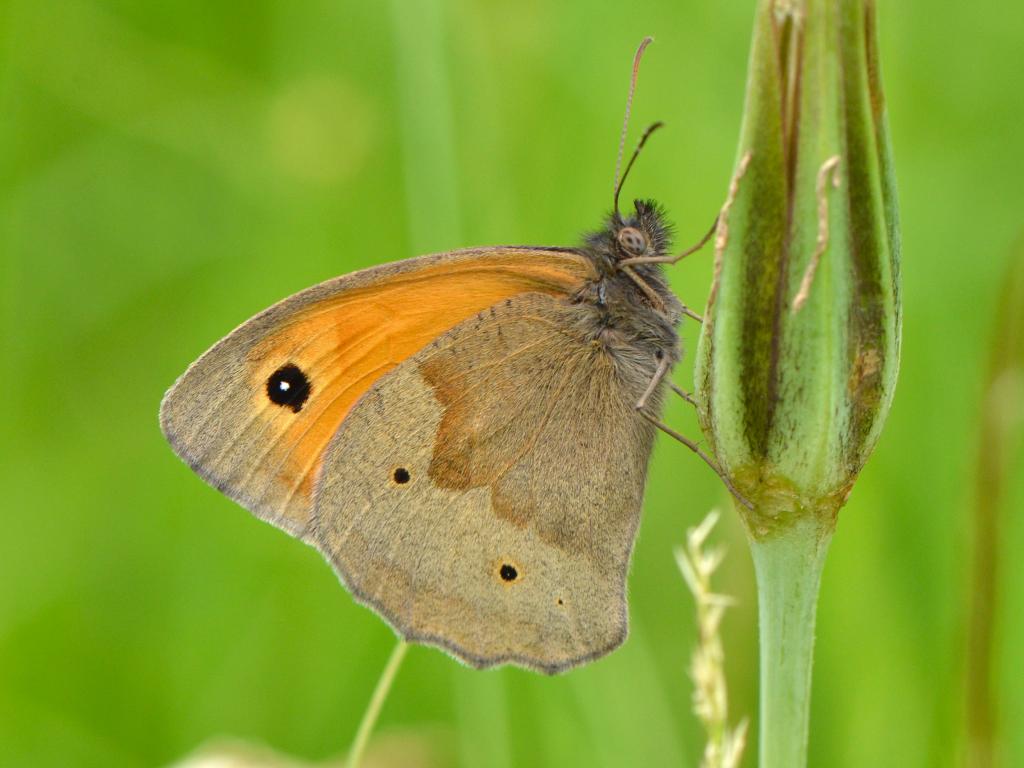
The Meadow Brown butterfly (Maniola jurtina) is one of the most common and widespread butterfly species in the British Isles and Europe. Here are key facts about its life cycle, diet, and habitat:
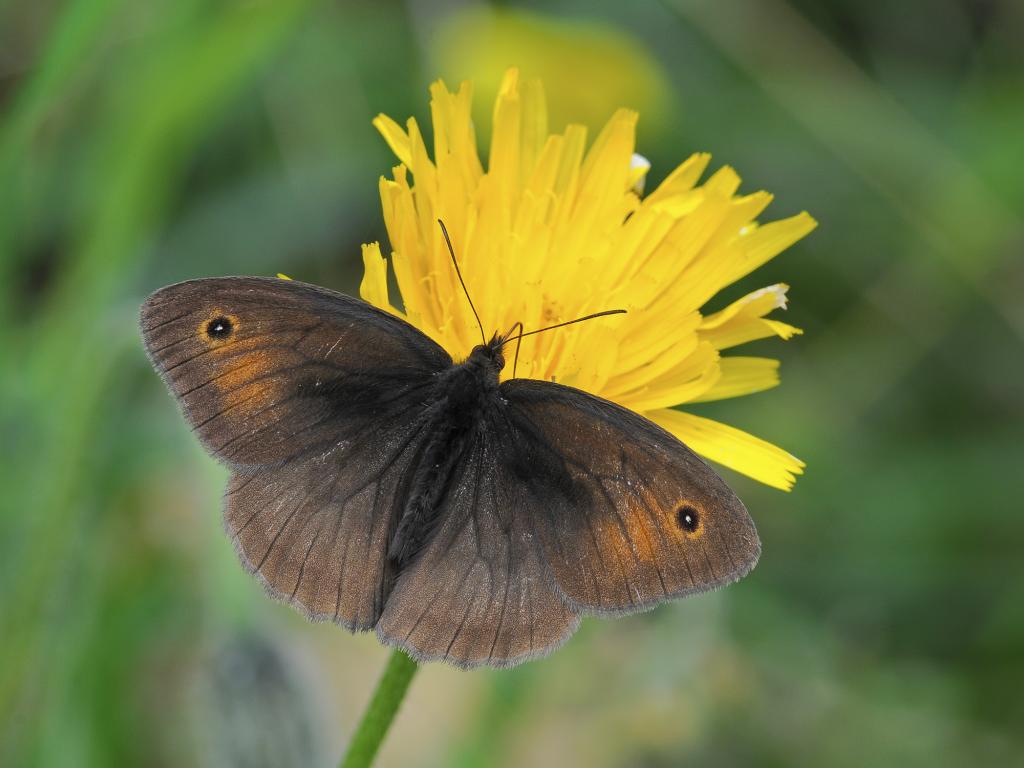
Life Cycle
The Meadow Brown has a single brood per year with a protracted flight period:There is one generation each year and the flight period can be quite protracted, with adults being seen from the middle of June to the end of September in most years.
- Eggs: Females lay pale yellow eggs singly on grass blades or drop them in flight. The eggs hatch in 2-3 weeks.
- Caterpillar:
- Pupa:
- Adult:
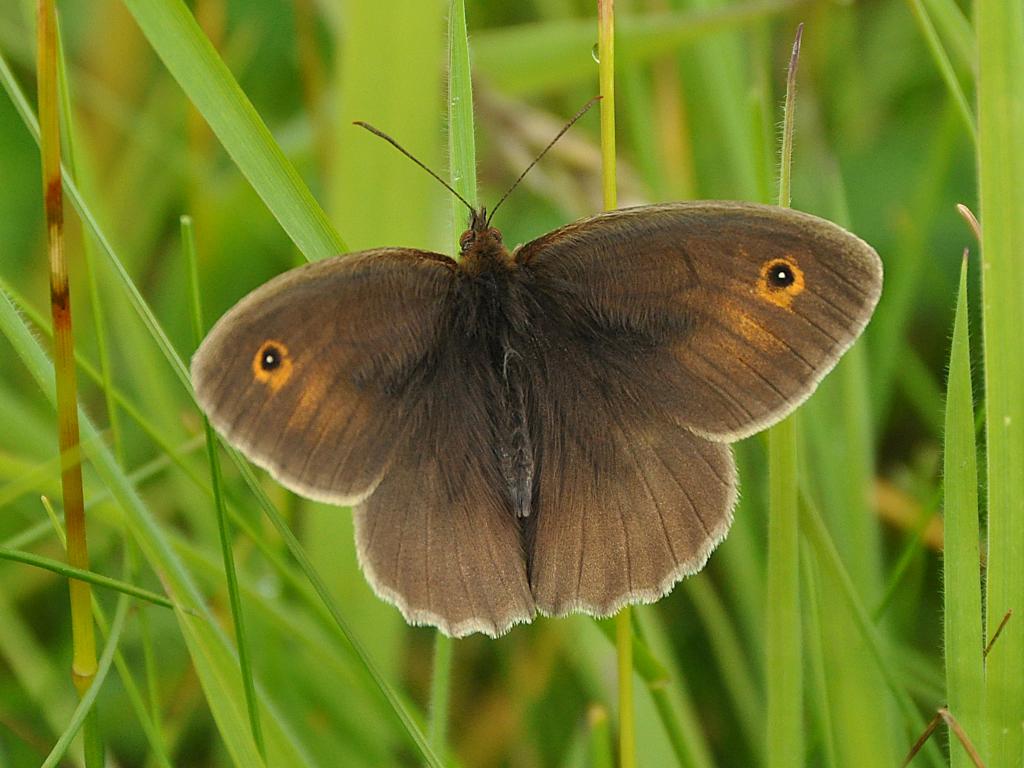
Diet
- Caterpillars: Feed on a variety of grasses, including:
- Adults: Nectar from various flowers, with a particular preference for:
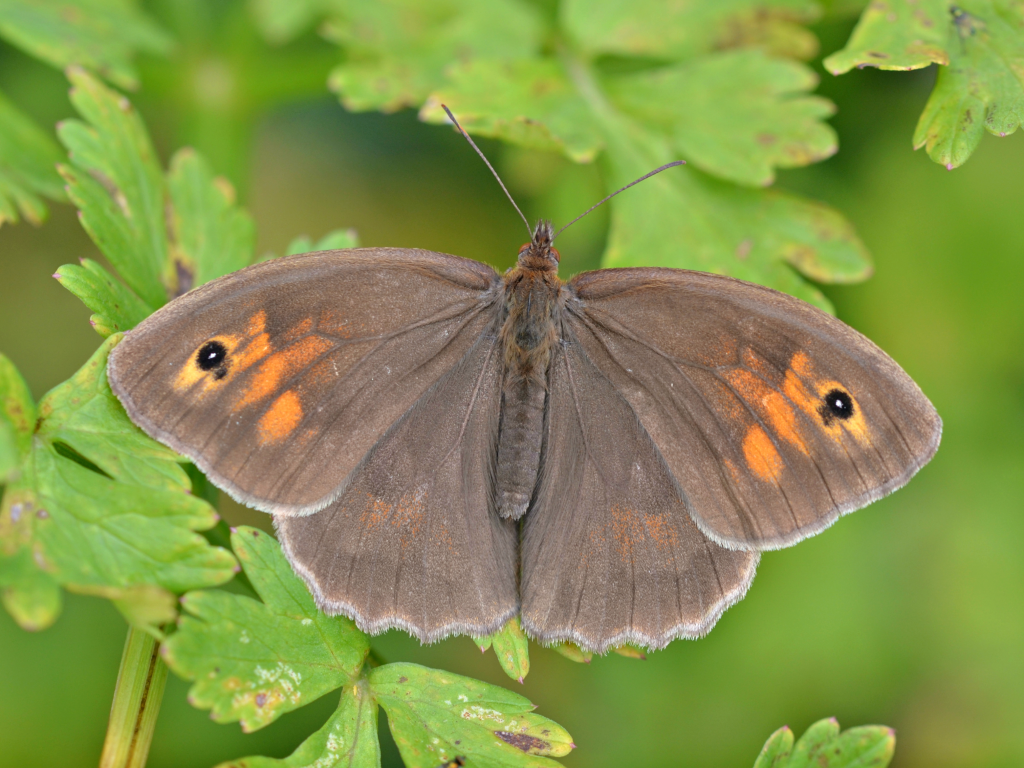
Habitat
The Meadow Brown butterfly is highly adaptable and can be found in various grassy habitats:
- Grasslands (both dry and damp)
- Woodland rides and clearings
- Field margins
- Hedgerows
- Road verges
- Coastal dunes
- Urban wastelands
- Overgrown gardens
They prefer areas with medium-height grass swards, but can also be found in heavily-grazed meadows, typically around field margins.
Additional Facts
- Appearance:
- Behavior:
- Conservation: The Meadow Brown is considered stable throughout its range and is not a species of conservation concern.
- Subspecies: Four named subspecies are found in the British Isles, with subtle differences between them.
The Meadow Brown’s ability to thrive in various grassy habitats and its long flight period contribute to its status as one of the most common butterflies in its range.

